Updating Your Skid Lid (Featuring Velocis and Starvos) – by Grannygear
Should you upgrade your “perfectly good helmet”?
We cyclists are big on upgrades. We pour over the fact sheets and reviews of bike parts looking for a sweet part that will add the wings of Pegasus to our 2019 ’Gravel Sled Carbon 1000’, SRAM Apex model. GRX looks amazing. Or maybe the new SRAM wide range wireless goods? Or wider wheels? Carbon bars?
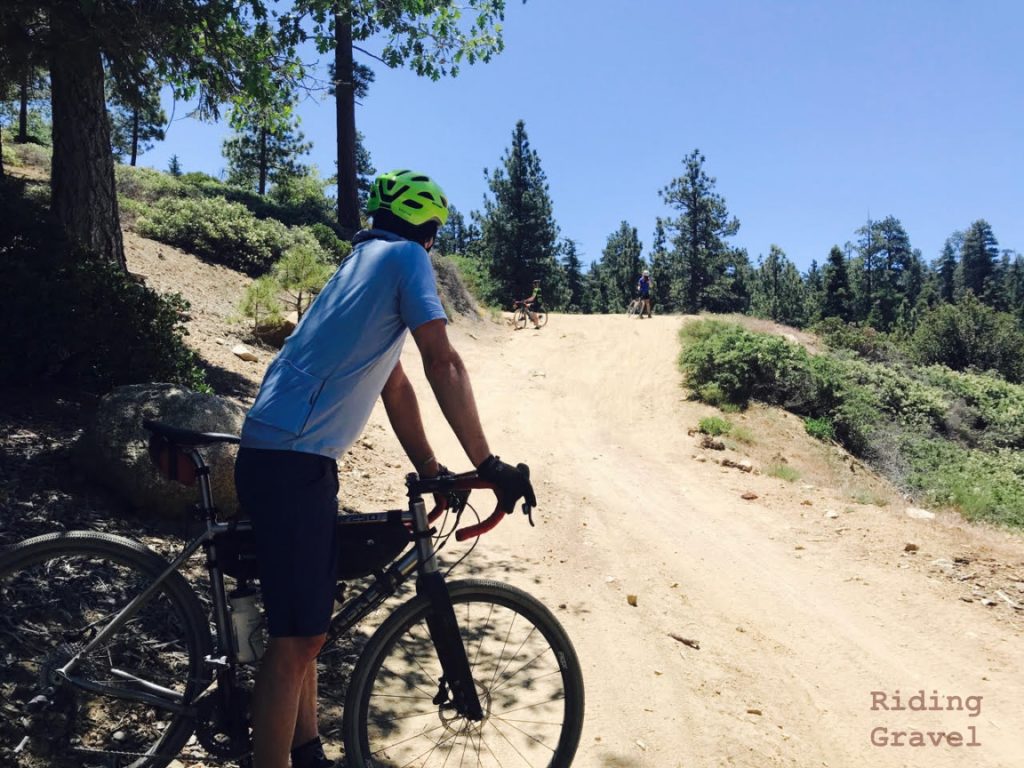
It’s endless, and sometime pointless, but upgrades can make a bike lighter, improve the fit and function, or just make us smile. Helmets though, are seldom upgraded. I mean it’s still up there, right? Sitting on my head, doing it’s thing. It is not ugly and I have not crashed in it (well, not much anyway), and helmets are expensive. It’s not like they wear out anyway.
Well, not so fast there, Danger Dan. Obviously a helmet that has seen a crash impact is one that should be discarded and replaced, although I cannot say how severe the impact has to be for that to be true. My recent crash and collarbone break ended with my head tapping into the ground last in the chain of destruction, so the impact was not even enough to jar my head or even leave a mark on the helmet. I am willing to risk that the helmet was not compromised in that situation, but of course I do not suggest you make that same risk. Up to you.
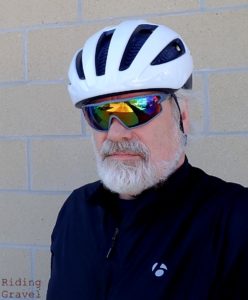
If the impact was significant and the helmet shows any signs of deformation or heavy scarring, not to mention fractures inside or outside, it’s time to bin it and start over. No argument there. What about a helmet that is a few years old, maybe a really nice one, and it still looks good and has never been crashed on? Should we consider upgrading that too? I would like to make the case that we should and here is why.
Helmets may not ugly out before they age out. UV degradation from sunlight exposure, interior degradation from salts and oils in our sweat, time spent in hot cars even…it’s death by a thousand cuts and while that might not mean the helmet is not going to protect you when you do hit the deck, it might mean that you are going to get less than 100% of the original effectiveness of what the helmet offered when it was new.
Here is what Trek includes with helmet packaging in regards to this subject:
“Replace an old helmet or a helmet with damage. The helmet is designed to absorb shock by partial destruction of the shell and liner. This damage may not be visible.Therefore, if subjected to a severe blow, the helmet should be destroyed and replaced even if it appears undamaged. The helmet has a limited lifespan in use and should be replaced when it shows obvious signs of wear. Helmet parts lose strength over time, so even if the helmet has not been impacted or damaged, replace it after three years. “
In this COVID-isolation induced frenzy of bike use we are seeing, at least here in So Cal where the local bike paths are crowded like we have never seen, most of the crowds are riders that are new or at least have resurrected old bikes from the garage. It’s lots of families and kids, which is great, but it’s also very dicey for the enthusiast on the trail. They may not even have a helmet at all, and if they do, it might have been hanging on a hook in the garage or on the back patio for who knows how long? ‘Dust it off and go’ is maybe not the best idea.
But beyond the aging out of a helmet, and outside of crash damage, there is still a good point to be made about upgrading your perfectly good helmet to something newer: MIPS and it’s ilk, like WaveCel.
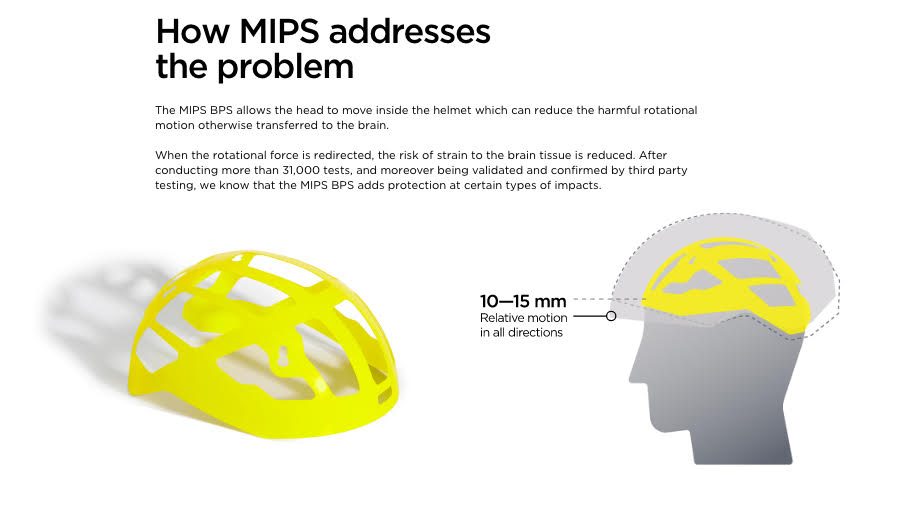
What is MIPS anyway? From the MIPS website:
“MIPS is a brain protection system — engineered to add protection to helmets. The MIPS Brain Protection System (BPS) is found inside the helmet, generally between the comfort padding and the EPS (a high-quality foam used to reduce energy). For certain impacts, the MIPS BPS can reduce harmful forces transmitted to the brain.
MIPS stands for Multi-directional Impact Protection System.“
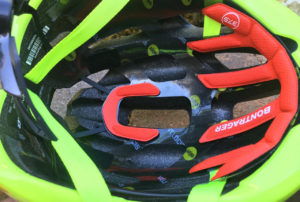
You’ve likely seen it advertised or maybe even seen it in person, that typically yellow colored layer of ‘plastic’ that sits between the padding and the helmet foam and shell. There are other versions of the concept but they all attempt to do the same thing and that is reduce the impact to the brain under certain conditions, focusing on lessening rotational acceleration and the resulting trauma. Now I may have just penned words that technically are all wrong, but imagine that your helmet, while still protecting you from impact, can also ‘slip’ under that impact, not requiring your head to instantly move along with it (to a point, of course). For instance, the road surface grabs the shell of the helmet in a crash and wants to rotate everything rapidly as friction meets momentum. That is a near instant acceleration and our brains like slo-mo. MIPS and it’s ilk buffer that acceleration and allow a properly fitted helmet to give your brain more ‘grace’ before it pins it to the wall. Apparently a little goes a long ways. And frankly when it comes to my brain, I will take less trauma over more trauma.
Now of course we could all ride encased in full face motorcycle helmets and that might be ‘safer’ (or not), but it would be stupid and silly and sweaty. So a helmet that ups the potential for less impact to our brain also has to balance out being a good helmet in other ways: cooling, weight, fit, cost, and yes, looks. At first it seemed that MIPS added both weight and cost to any helmet, but recently that seems to have abated somewhat. As well, there are MIPS-like inner parts that seek to accomplish the same thing without licensing the MIPS name and tech. For instance the KALI Alchemy helmet that I use for gravel has what they call “LDL” in it for the same purposes. Kali claims that “Our LDL reduces rotational impact forces up to 25%, and reduces low-g linear forces up to 30%.” That Kali helmet costs 100 bucks or so, hardly nosebleed territory.
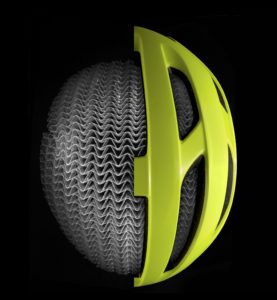
Trek made quite a splash when they debuted WaveCel following a covert marketing campaign that had the inner-webs all tied up over what they were teasing, that being a soon to be released, amazing technological cycling improvement unlike the world had ever seen, or something like that. It was not a helium filled frame or an aero this or that, rather it was a new helmet ‘liner’, if you will, that is very unlike the MIPS approach. It looks like you cut an organically grown structure in half lengthwise and peered at it under a microscope. It’s different, and whether it is truly better than MIPS is still being debated. Not my dog fight, but if it is better than the old system of foam and padding, then fine.
To look at this idea of helmet upgrades, I have two examples of how to do this, both from Trek/Bontrager. One is a high end helmet with MIPS. It’s light, stylish, heavily vented, and costs a fair bit. Consider it a ‘Superhelmet’. The other is a moderately priced helmet with WaveCel technology and by itself is a compelling package.
Let’s take a look at the samples I have.
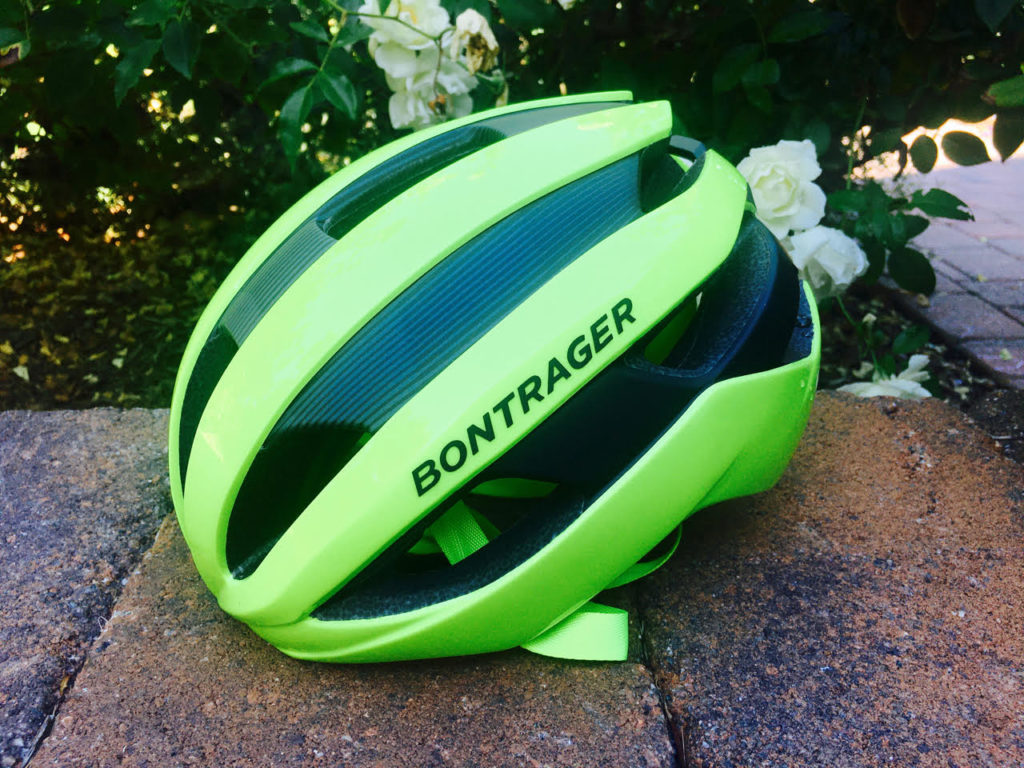
Bontrager Velocis MIPS helmet: $209.99: Two hundred bucks is getting into very nice helmet territory. What typically happens in a road helmet, is that the more you spend the less the helmet weighs and, unless it is designed to be aero as a main priority, the vents get bigger. This means that the manufacturer has to be very smart with the materials and helmet build, since less mass could mean less protection. All that costs money. Does it cost twice as much to produce as a $100 dollar helmet? Not likely, but you don’t really think an S Works frame costs that much more to make than a more pedestrian version, do you? Of course you don’t. But I digress.
All marketing aside, a lighter, more ventilated helmet is very nice to use and the high cost helmets typically look more zooty and that is always good for the ego.
The Velocis MIPS medium sample weighed 270g on my kitchen scale of truth and justice and it feels quite nice to heft. Barely there. On the head the fit is more rounded then other helmets I have, so I do get more forehead/back of the head pressure and less side to side, but that seems to keep the helmet from tipping up as easily. Overall it’s very comfy, with a tidy outer shape having little angular points or sharp edges. The hard shell wraps around the helmet’s edge, something not as common on lesser cost helmets. It’s good looking to my eye and I chose the bright yellow color, as a helmet is often a focal point of visibility on the road or trail. Even the straps are hi-vis.
The Boa dial system is light and flexible and should survive being tossed into a gear bag without breaking. It micro-adjusts well with an easy touch and has been faff free.
After a few hundred miles of use, the Velocis has been very easy to live with. It seems like a quiet helmet too, not roaring in my ears on fast downhills. The weight is feathery enough to not feel it when your neck gets tired and nothing pinches or pokes.
I even crossed a boundary of cycling authenticity yesterday when I, for the first time, stowed my sunglasses upside down into the front vents of the Velocis on a foggy, drippy day’s ride. Yes, you read it here first. No need to send kudos, me being a humble man and all.
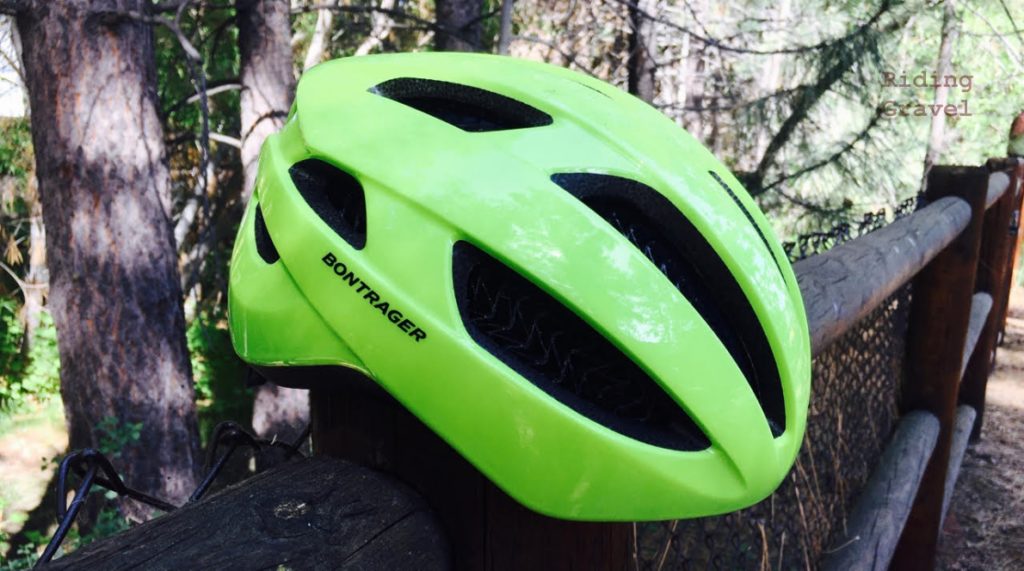
Bontrager Starvos WaveCel helmet: $99.99: With WaveCel on the inside, a similar shape to the Velocis on the outside, yet with more exposed EPS foam and a bit bulkier girth, the Starvos brings WaveCel tech to a 100 dollar helmet. A hundy spent is a very reasonable place to land for a helmet that is intended for enthusiast use.
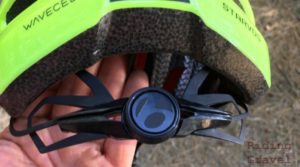
The tensioning system is a bit less refined than the Boa dial on the Velocis, the numb clicks feeling a bit crude to the hand, but the end result is fine. I actually like the fit of the Starvos better than the Velocis. It’s a small difference, but I notice it. I seem to feel the sides of the helmet against my head more. I have heard of WaveCel being a bit harsh on bare heads. I did not feel that, but I still have hair (mostly) and I always ride with a Buff of some kind.
Weight and heat: I had two main concerns about a WaveCel helmet. Those were weight, and heat. A heavy helmet tasks your neck muscles on long days. A helmet that cannot effectively get air in and out in warm weather is hot to wear. Neither are a good thing.
To compare, I have another helmet of the same cost as the Starvos that weighs 329g and has a visor too The Starvos is not light at 342g. The Starvos is also 72g heavier than the Velocis. That is less than a 1/4 pound, so while I noticed the weight when I picked both of them up, I only felt the weight when using it at the end of long rides on very bumpy roads. However, if the WaveCel is as good as it is claimed to be, what is the added weight of an uncooked hamburger patty if it keeps you out of long therapy sessions for brain trauma?
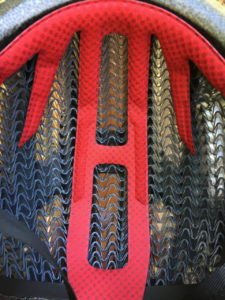
Now heat was another thing and it’s a bit hard to measure. I don’t have thermocouple-ma-bobbies to get scientific numbers and you only have one helmet on any given ride, so it’s not like you can carry an extra with you, swap, then compare. I recall testing a Smith Koroyd helmet when they first came out and it was stifling on a very hot day. I feared the same for WaveCel, but how to know?
So what I did was this. I took a half sized Buff head wrap, a very thin one that covered from the ears to nearly the top of my head. I soaked it in water then wrung it out. Then I put on the Starvos and rode a one mile loop in 80-ish degree weather with swirling, moist, winds in an on-shore flow weather pattern. That was a lot of air movement added to what I was creating on my own. On each loop I circled back home and repeated my wet-and-wring deal, then rode out in a different helmet. The Starvos, the Velocis, and a Kali helmet (that had similar venting to the Starvos at the same cost) were the three I compared.
The result was surprising. Of course the Velocis offered the most cooling feeling while riding as the vents are large and well designed. It was like what you get when you suck on a mint and then breathe in, but for my head. The less of that cool-ish feel I experienced, the less air was moving through the helmet, or at least that was my impression. Hardly scientific and very experiential. Still, my head feels what it feels.
The next ‘coolest’ of the two was the Starvos. It was quite a bit better than the Kali, a more traditionally designed 100 dollar helmet, and I have not noticed the Kali helmet as being hot to wear. That being said, I think the WaveCel, as used in the Starvos at least, is better than I feared. Color me surprised.
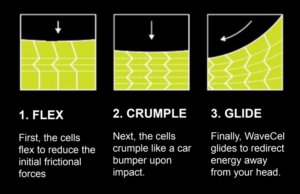
Other thoughts: You can’t do the ’stick your sunglasses in there’ thing as WaveCel says “No”, but it’s also a bee and bug free zone.
Is the WaveCel based helmet really that better in protecting us from impacts? I cannot prove that, but taking Trek at it’s word, it seems to be. That said, it also is still a very good helmet in its own right. A bit heavy, yes, but everything is a compromise, and this might be one of those places where the needle swings to our long term advantage.
NOTE: For a separate review of the Starvos WaveCel Helmet, see Guitar Ted’s Review here.
Note: Bontrager sent over the Starvos WaveCel Helmet and the Bontrager Velocis MIPS helmet at no charge to Riding Gravel for test and review. We were not paid, nor bribed for this review and we always strive to give our honest thoughts and views throughout.


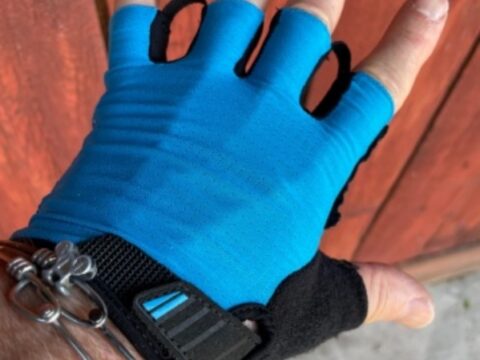
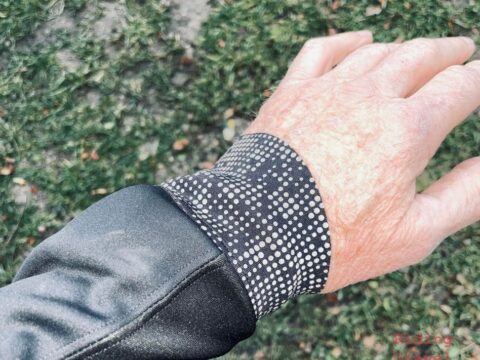
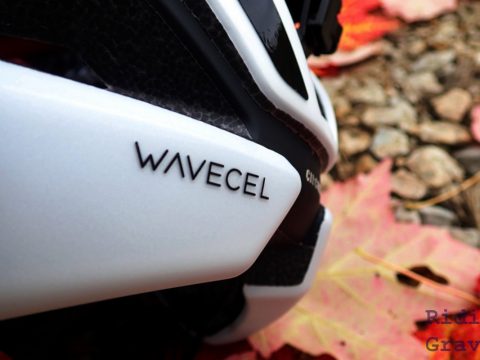

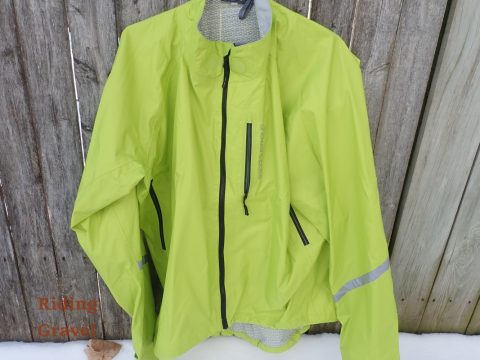
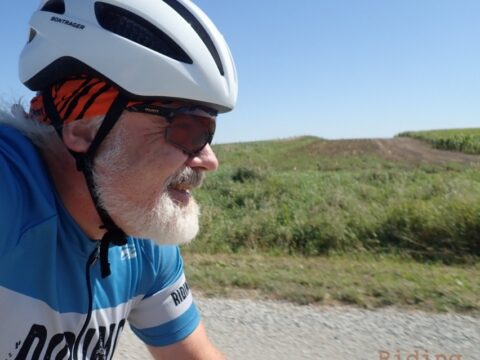
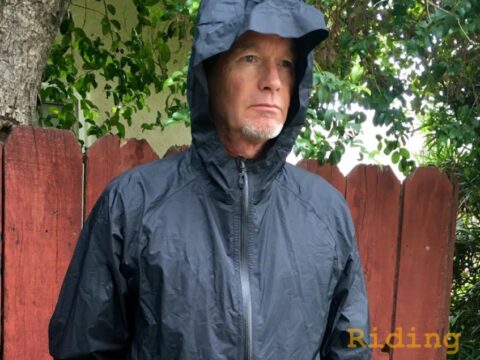


One organization that does impact testing, with good explanations of how and why:
https://www.helmet.beam.vt.edu/bicycle-helmet-ratings.html